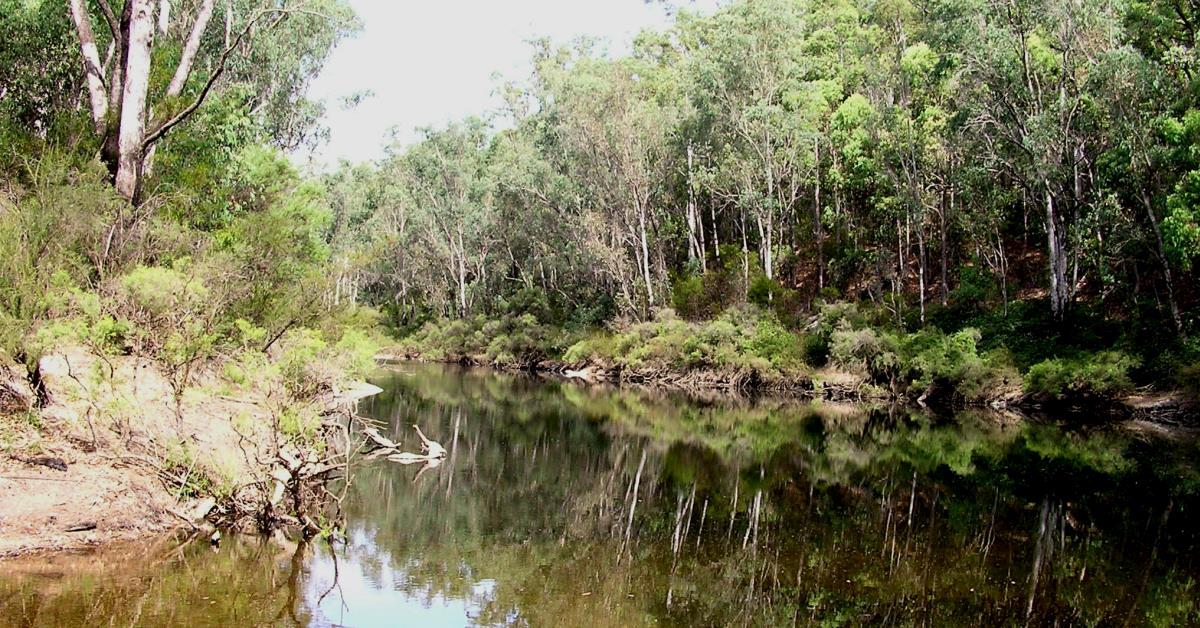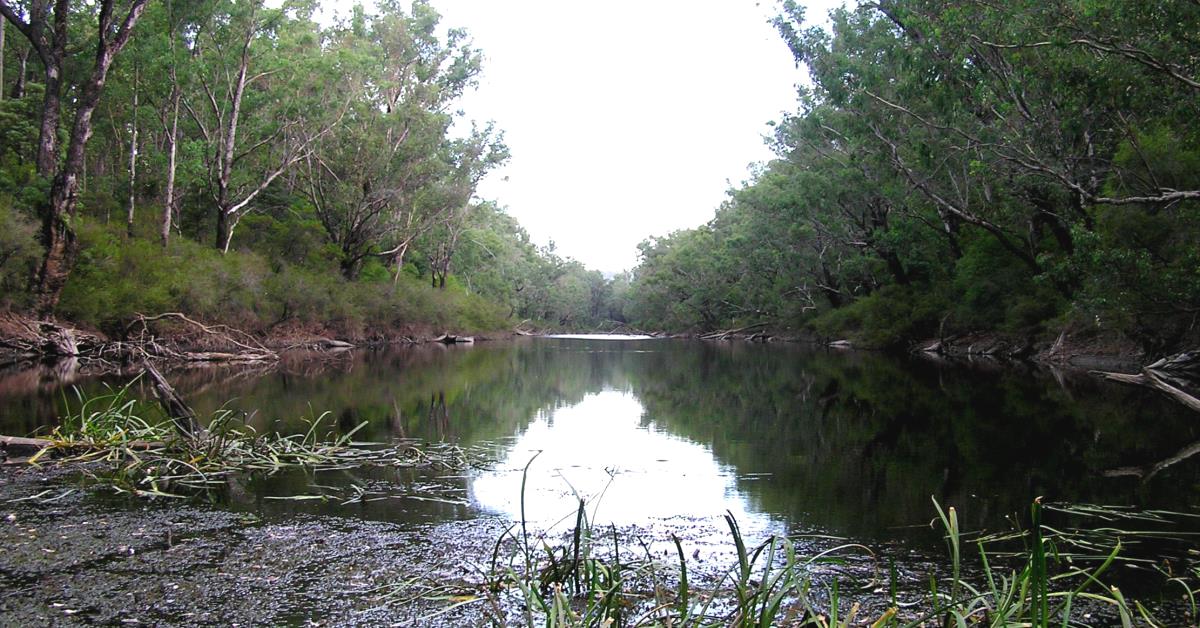“Bibbulmun Track, Guidebook 1, Darling Range” .
“Dwellingup Day Walk Map Pack”, Bibbulmun Track Foundation. – Includes 8 suggested Bibbulmun Track day walk options.
“Guide to Lane Poole Reserve, Dwellingup”, CALM (pre-DBCA, undated). – This old brochure (unfortunately not re-printed) included a good ‘overview’ of the Reserve including a brief summary of trails, and notes on the history, fauna, etc. Trails described very briefly in the leaflet included the King Jarrah Trail (18km) and the Murray Valley Circuit (46km over 3 days). – The Murray Valley Circuit lies in the NW area of the Reserve and overlaps with the walk described on this page only at the Nanga Mill camping & picnic area. The Murray Valley Circuit also visits Scarp Pool and Scarp Lookout.
Hotham Valley Tourist Railway (HVTR) – Today the dedicated HVTR volunteers provide visitors with a great sense of the early saw milling and railway history of the Dwelllingup area with short journeys into the jarrah forest in historic steam and diesel locomotives along 8km of restored light railway.
“King Jarrah Heritage Trail, Lane Poole, Dwellingup”, Trails WA. – The WalkGPS Murray River Walk includes about half of this 18km loop trail.
“Lane Poole Reserve and Proposed Reserve Additions – Management Plan 2011”, DBCA and Conservation Commission of Western Australia.
Lane Poole Reserve – WalkGPS-GoogleEarth map image of the Reserve showing the proposed reserve additions, plus Bibbulmun Track and campsites and existing and future extent of ALCOA bauxite mining. (Also see Bauxite mining page.)
“Lane Poole Reserve”, DBCA site. – Includes a downloadable Park Guide.
“Travellers guide to the Parks & Reserves of Western Australia”, Simon Nevill, 4th Edn. 2011, p.62-63 (Simon Nevill Publications) – Includes a very brief summary of the Reserve.
Trivia: What does the “Form” or “Formation” in Coffs Form. or South Junction Formation mean? – A ‘formation’ (or ‘form.’) comprises the top of embankments and base of cuttings on which a railway or tramway track was laid to take timber to a local mill. The railways themselves have largely disappeared leaving the ‘forms’ as reminders of the earlier logging days. They are common in the southwest forests and have often been later converted for 4WD/forestry vehicle use (and partly for easy, levelled walking tracks!).
Other map availability
“South West WA 25K Scale Topo Maps”, Greg Harewood & Landgate, 2015. – Digital raster; ECW format on 16GB USB. See tiles #285-2132-III-NE and #286-2132-III-NW for relevant map coverage.



